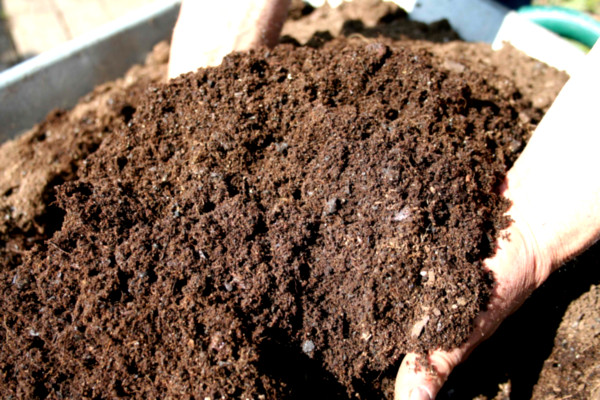Don’t you know that you can grow vegetables and herbs even if you only have a small space? With the application of soil conditioner, you can grow healthy vegetables and herbs in small plots or in plastic containers and enjoy a bountiful harvest at a minimal cost. This is true to Nilo F. Estrella who does urban gardening in his place.

By applying soil conditioner, Nilo grows sweet corn and vegetables- like lettuce, pechay, mustasa, sili, tomatoes, eggplants, alugbati, lemongrass, saluyot, pandan, Chinese kangkong, camote tops, ginger, luyang dilaw, malunggay- and herbs- like sweet basil, tarragon, oregano, sambong, damong mais and tawa-tawa- in plastic cans, bottles or styropors.
After Nilo F. Estrella learned the technology during the urban gardening seminar conducted by Dr. Lino Cortez and Manuel Cortez in 2007, he conducted his own research and developed his own models.
First Model: Production and Application of a Potent Lactobacilli Solution as a Soil Conditioner and Foliar Spray. It is done by producing Effective Microorganisms (EMO) through fermentation.
How to Make It:
1. Mix the rice wash and kitchen refuse, then fill 1/4 of a plastic container with the mixture and let it stand for a week.
2. After that, dispose the thin-film like substance that developed on top of the fermented mixture. Set aside half of the mixture then add ten parts of evaporated milk and one part molasses or brown sugar with the other half. Cover the container with cloth and let it stand for a week in a cool and well-ventilated place.
3. The fermentation will be complete after a week. The lactobacilli in the milk have killed the harmful microorganisms in the mixture.
How to Use:
Mix 45ml or about 3 tbsps. of the concoction with 16 liters of water then spray it to the soil regularly. When it is applied as foliar spray, sprinkle the plants with water afterwards to prevent after effects according to Nilo Estrella.
Second Model: Propagation of Indigenous Microorganism (IMO) through Fermentation.
Nilo uses cooked rice as substrate in collecting airborne microorganisms.
How to Make It:
1. Fill 1/4 of a plastic container with rice and allow it to stand for a week. By this time molds have appeared on the upper portion of the rice. Scrape these and put in another container that is 3/4 full of a mixture of water, molasses and milk.
2. Cover the container with clean cloth and let it stand for a week when fermentation is complete.
How to Use it:
Mix 45ml or about 3 tbsps. of the IMO concoction with 16 liters of water then spray it to soil and plants.
Third Model: Production and Application of Vermicast as a source of nitrogen, phosphorous and potassium.
How to Make It:
Feed the leaves of plants rich in nitrogen and kitchen refuse to African nightcrawler earthworms to produce vermicast. Then the vermicast, also known as worm castings, worm humus or worm manure can be added to soil containers to sustain the growth of vegetables.
How to Make Pesticide:
1. Nilo mixes with water two of any of the following: chopped hot pepper, garlic, onions, lemon grass, oregano, ginger and leaves of neem tree, makabuhay, or kakawate. Spray the solution as pesticide.
Source: Pete Samonte (2010). Making Soil Conditioners for Urban Gardening. Agriculture Magazine


Dear
Like to know the nutrient content if we make compost from fish meal and chipped plant materials. If it’s worth using in plant how much should I use with soil?
Thanking you.
thanks…new solutions…..to me…
Informative
amazing
amazing